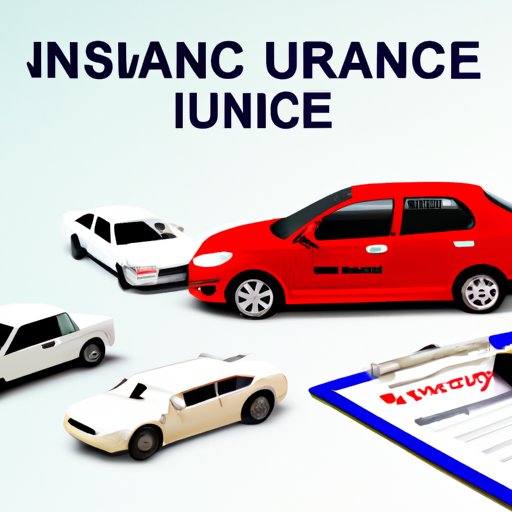Introduction
Car insurance is an expensive yet necessary cost when owning a vehicle. However, there are ways you can lower your car insurance premiums. In this article, we’ll explore various strategies that can help you get the best rates possible.
Shopping Around for the Best Rates
The first step in finding the best car insurance rates is to shop around. There are many different insurers out there, and they all have their own criteria for determining rates. By comparing quotes from multiple companies, you can get a better understanding of what kind of coverage you need, and which company offers the best deal.
When comparing quotes, be sure to look at factors such as coverage limits, deductibles, discounts, and other special offers. You should also take into account the customer service ratings of each company. A higher-rated insurer may offer more personalized service, which can be invaluable if you ever need to file a claim.
It’s also important to negotiate with the insurer. Many insurers are willing to work with you to find the best rate. If you can prove that you’re a responsible driver, you may be able to get a discounted rate.
Increasing Your Deductible
One way to save money on car insurance is to increase your deductible. A deductible is the amount of money you have to pay before your insurance kicks in. The higher your deductible, the lower your premiums will be. However, it’s important to make sure you choose an appropriate deductible amount that you can afford in case of an accident.
Raising your deductible can be a great way to save money, but there are some potential drawbacks. For instance, if you are involved in an accident and the damage exceeds your deductible amount, you may end up paying more than if you had opted for a lower deductible.
Bundling Insurance Policies
Another way to save money on car insurance is to bundle your policies. Bundling your policies means getting multiple types of insurance (such as auto, home, and life) from the same provider. This can often lead to significant savings, as insurers are usually willing to give discounts for customers who purchase multiple policies.
When bundling policies, it’s important to make sure you’re getting the best deal. Shop around to compare rates and make sure you’re not overpaying for any one policy. Additionally, you should read the fine print carefully to make sure you understand exactly what is covered under each policy.

Maintaining a Good Driving Record
Your driving record is one of the most important factors in determining your car insurance rates. Traffic violations and accidents can significantly raise your rates, so it’s important to practice safe driving habits. To keep your rates low, avoid speeding, tailgating, and other dangerous behaviors.
If you do receive a ticket, try to take a defensive driving course to reduce or dismiss the violation. This can help keep your rates low and prevent points from being added to your license. Additionally, avoid filing claims unless absolutely necessary, as this can also lead to higher premiums.
Taking Advantage of Discounts
Insurance companies offer a variety of discounts that can help you save money on your car insurance. Common discounts include multi-car, good student, and safe driver. Be sure to ask your insurer about any available discounts, and make sure you are taking full advantage of them.
You should also check with your employer, as many companies offer discounts for employees. Additionally, you may be able to get discounts through membership organizations, such as AAA or AARP. Finally, don’t forget to ask about discounts for paying your premium in full or signing up for automatic payments.

Driving a Car with Safety Features
Cars with certain safety features can qualify for additional discounts on your car insurance. Common safety features include anti-lock brakes, airbags, and electronic stability control. Make sure to check with your insurer to see which features qualify for discounts.
When buying a new car, consider purchasing one with safety features. Not only can this help you get cheaper car insurance, but it can also help protect you in the event of an accident. Also, make sure to keep your vehicle well-maintained, as this can also lead to lower premiums.

Reducing Coverage on Older Vehicles
If you have an older vehicle, you may want to consider reducing your coverage. Comprehensive and collision coverage can be expensive, and if your vehicle is old or has a low value, these types of coverage may not be worth the cost. Consider dropping these coverages and opting for liability coverage only.
However, it’s important to make sure you still have adequate protection. If you plan to drive your vehicle regularly, it may be worthwhile to keep comprehensive and collision coverage, even if it costs a bit more. Additionally, make sure to review your policy periodically to ensure you are getting the best coverage for your needs.
Conclusion
In conclusion, there are many strategies you can use to lower your car insurance premiums. Shopping around for the best rates, increasing your deductible, bundling policies, maintaining a good driving record, taking advantage of discounts, and driving a car with safety features are all effective ways to save money on car insurance. Additionally, reducing coverage on older vehicles can help you get the protection you need without breaking the bank.


